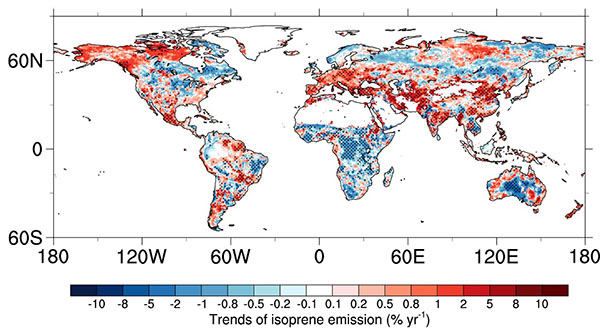
Biogenic volatile organic compounds (BVOCs) emitted by vegetation are important precursors of ozone and secondary organic aerosols in the atmosphere, affecting air quality, clouds, and climate. However, BVOC emissions remain highly uncertain because they depend on a variety of factors, and the relative importance of different factors is still unclear.
In a recent study published in the journal Atmospheric Chemistry and Physics, a team of scientists from the Institute of Atmospheric Physics of the Chinese Academy of Sciences and Texas A&M University has simulated regional to global changes in BVOC emissions over the past two decades using the latest BVOC emission model, MEGANv3.2.
The researchers quantifies the contributions of different drivers, such as vegetation, meteorological parameters, and carbon dioxide concentration, to BVOC emission trends, and they found that BVOC emission trends vary among different regions.
While global greening trends significantly boost BVOC emissions, deforestation, coupled with the rapid agricultural expansion, reduces BVOC emissions in South America and Southeast Asia.
In addition, elevated temperatures in Europe and increased soil moisture in East and South Asia contribute to the increase in BVOC emissions in these regions.


86-10-68597521 (day)
86-10-68597289 (night)

86-10-68511095 (day)
86-10-68512458 (night)

cas_en@cas.cn

52 Sanlihe Rd., Xicheng District,
Beijing, China (100864)

